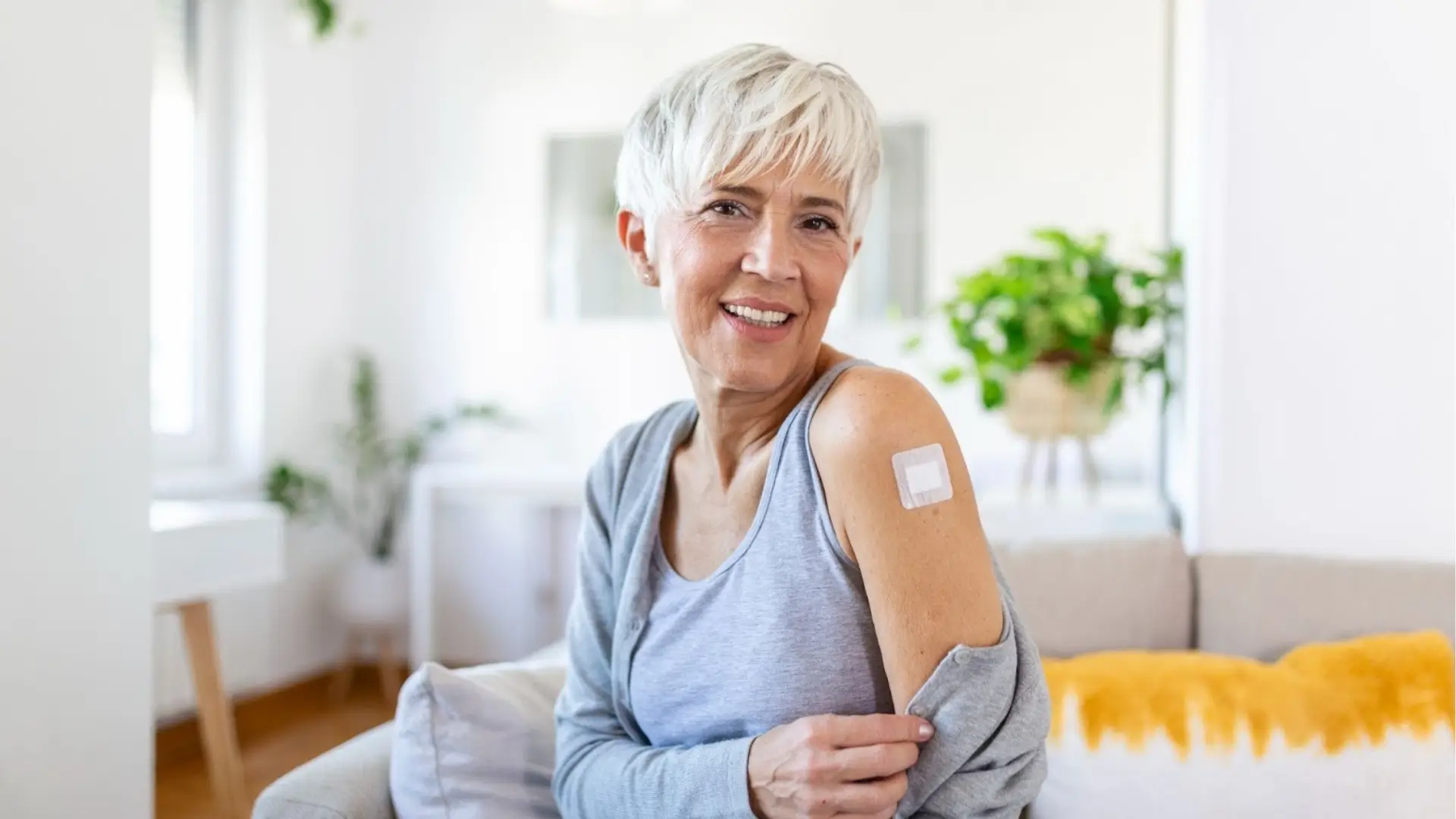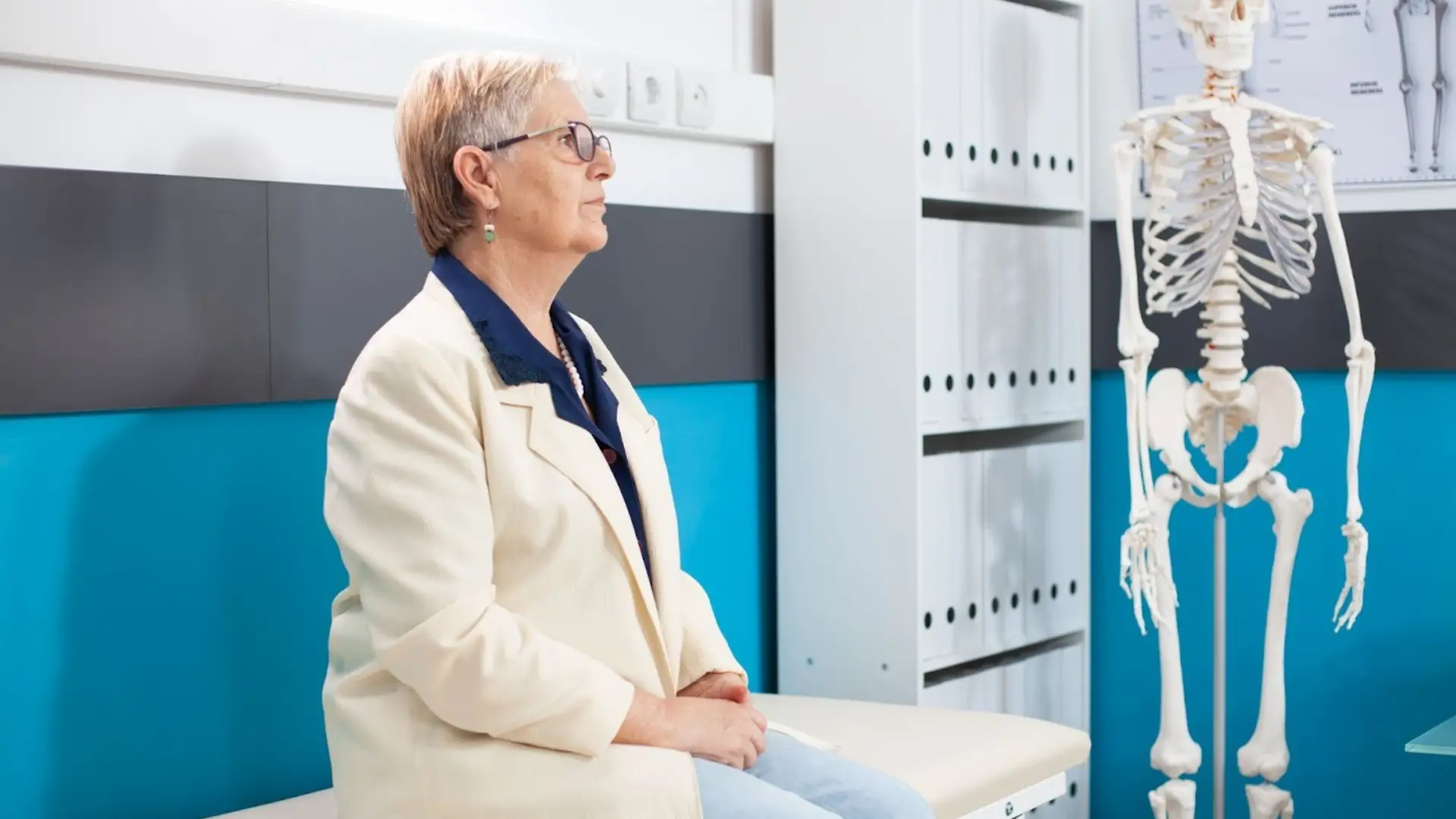
Osteoporosis is a common condition that affects millions of people worldwide, leading to weakened bones and an increased risk of fractures over time. In the U.S., the condition affects 12.6% of adults aged 50 and older, with that number rising to 17.7% among those aged 65 and older. These statistics highlight the growing need for effective treatments that can help restore bone strength and reduce fracture risk.
Evenity (romosozumab-aqqg) is a prescription medication specifically approved for postmenopausal women who are at high risk of fractures. What sets Evenity apart from other therapies is its dual mechanism of action: it not only stimulates new bone formation, but also reduces bone resorption by inhibiting sclerostin, a protein that regulates bone metabolism. As a relatively new treatment option, Evenity is increasingly vital in osteoporosis management.
In this article, we’ll dive into what Evenity is, how it works to improve bone health, and who might benefit most from this innovative therapy.
Key Takeaways
- Evenity is a monoclonal antibody and sclerostin inhibitor, designed to both build new bone and reduce bone resorption, making it a powerful treatment for osteoporosis.
- Evenity actively stimulates bone formation while offering some anti-resorptive effects.
- It is approved for postmenopausal women at high fracture risk and is typically prescribed for 12 months. After this, patients must transition to long-term antiresorptive therapy to maintain the bone density gains achieved.
- Evenity carries a cardiovascular risk warning and is contraindicated in patients who have had a myocardial infarction or stroke within the last year. It also should not be used in patients with hypocalcemia.
- Clinical studies show that Evenity improves bone mineral density quickly, particularly at the spine and hip, and helps reduce fracture risk in high-risk patients.
About: Doctor Medica is your trusted supplier of top-quality dermal fillers, viscosupplements, and more for your medical practice. We offer genuine products from leading brands at the lowest prices available. If you’re looking to order Evenity online for your practice, contact Doctor Medica today.
Mechanism of Action: How Evenity Targets Sclerostin to Build Bone

To understand what Evenity is, it’s important to look at how it works at the cellular level. Evenity (romosozumab-aqqg) is a sclerostin inhibitor, meaning it blocks the activity of sclerostin, a protein naturally produced in bones that slows bone formation. By suppressing sclerostin, Evenity activates the body’s natural bone-building pathways, leading to increased bone mass and stronger bones over time.
Primary Mechanism Points
- Drug class: Monoclonal antibody and bone formation drug. Evenity is a biologic therapy designed to precisely target molecular pathways involved in bone remodeling. Unlike treatments that only slow bone loss, Evenity actively promotes bone regeneration.
- Target: Sclerostin protein. Sclerostin normally acts as a “brake” on bone formation. By blocking this protein, Evenity releases that brake, allowing osteoblasts (bone-forming cells) to work more efficiently.
- Outcome: Rapid increases in bone mineral density (BMD). Clinical studies show that patients experience significant improvements in BMD at the spine and hip within months, often surpassing the gains seen with traditional osteoporosis medications.
Clinical Effect
Bone strengthening becomes noticeable ithin months, making Evenity particularly beneficial for patients who have recently experienced fractures or are at high fracture risk, where early structural reinforcement is crucial.
Why This Matters Clinically
Unlike most osteoporosis medications that only slow bone breakdown, romosozumab provides a dual-action benefit:
- It stimulates bone formation.
- It reduces bone resorption.
This dual action makes Evenity particularly useful as a first-phase treatment for patients who need rapid bone rebuilding. It creates a stronger foundation that can later be maintained with long-term antiresorptive therapy.
Clinical Benefits: Bone Formation, Reduced Resorption, and Fracture-Risk Reduction
Clinical trials consistently show that Evenity leads to significant increases in bone mineral density, particularly at the spine and hip. These improvements directly translate into a meaningful reduction in fracture risk, including preventing vertebral, non-vertebral, and hip fractures in high-risk patients.
Documented Clinical Benefits
- Rapid bone-building effect compared to other therapies.
- Reduced spinal fracture risk by up to 73% over 12 months (in comparison to placebo in a key clinical trial).
- Increased hip BMD, improving stability and reducing the risk of fall-related fractures.
- Adds structural resilience, not just density, improving overall bone quality.
These benefits make Evenity a strong choice when immediate intervention is needed to restore skeletal strength.
Indications and Patient Populations Best Suited for Evenity Treatment

Evenity is approved for treating osteoporosis in postmenopausal women at high risk for fractures, especially when bone density has declined significantly or fragility fractures have already occurred. It is particularly valuable when rapid bone formation is needed, such as after a recent vertebral or hip fracture.
Ideal candidates for Evenity include postmenopausal women who have experienced fractures, those with very low T-scores, and individuals who have not achieved adequate bone improvement with other medications such as bisphosphonates or Prolia. While some wonder if Evenity is a bisphosphonate, it actually works differently as a sclerostin inhibitor, making it a good choice for patients who need more aggressive bone-building therapy.
Since Evenity therapy is generally limited to 12 months, patients typically transition to an antiresorptive medication afterward to help preserve the bone density gains achieved. This transition is crucial because bone formation naturally slows after discontinuation of Evenity. Healthcare providers continue to monitor bone mineral density to ensure ongoing protection and adjust therapy as necessary, helping patients maintain improved structural stability.
Safety Profile and Key Contraindications, Including Cardiovascular Considerations
Understanding the safety profile of Evenity is essential for patients and healthcare providers alike. While most patients tolerate Evenity well, some common side effects may occur as the body adjusts to the increased bone-building activity. These include joint pain, headaches, and mild injection-site swelling or tenderness. These reactions are typically mild and patients can manage them without stopping treatment.
A key element of Evenity’s safety profile is its boxed cardiovascular warning. Studies have shown an increased risk of heart attack and stroke in certain patients receiving romosozumab. Patients who have had a myocardial infarction or stroke within the preceding year should avoid using Evenity. Due to this risk, healthcare providers must carefully evaluate the benefits against the cardiovascular risks in all patients.
Additionally, it also has contraindications in patients with hypocalcemia, and they must correct their calcium levels before starting therapy. Evenity is administered once a month by a healthcare professional via two subcutaneous injections during each scheduled session.
Conclusion
Evenity is a targeted bone-building biologic therapy that reshapes how osteoporosis is treated, especially for high-risk postmenopausal women. As a sclerostin inhibitor, Evenity uniquely boosts bone formation while reducing bone loss, offering rapid improvements in bone mineral density and meaningful reductions in fractures. However, treatment only runs for 12 months, after which patients must transition to maintenance therapy to preserve the benefits.
With proper dosing, monitoring, and a well-timed transition to antiresorptive therapy, patients can maintain bone strength and enjoy better fracture protection in the long term.
FAQs
1. How long does Evenity treatment last?
Evenity treatment goes on for over 12 months. After completing therapy, patients transition to another medication to maintain bone density.
2. Which part of the body does a patient receive Evenity injections?
For each monthly dose, the healthcare practitioner gives it as two injections under the skin in the abdomen, thigh, or upper arm.
3. Is Evenity the same as Prolia or bisphosphonates?
No. Evenity is a bone-building medication, while Prolia and bisphosphonates primarily prevent bone breakdown.
4. Who should avoid Evenity?
Patients with a recent heart attack or stroke or those at high cardiovascular risk. It is also contraindicated in individuals with hypocalcemia.
References
Krupa KN, Parmar M, Delo LF. Romosozumab. In: StatPearls. Treasure Island (FL): StatPearls Publishing; July 19, 2024.
Langdahl B, Hofbauer LC, Ferrari S, et al. Romosozumab efficacy and safety in European patients enrolled in the FRAME trial. Osteoporos Int. 2022;33(12):2527-2536. doi:10.1007/s00198-022-06544-2
Qaseem A, Mount CA, Campos K, et al. Quality Indicators for Osteoporosis in Adults: A Review of Performance Measures by the American College of Physicians. Ann Intern Med. 2023;176(10):1386-1391. doi:10.7326/M23-1291
Related Articles
Joanna Carr
Radiesse For The Hands – Volumize and Rejuvenate
Radiesse is a dermal filler that can effectively rejuvenate aging hands by restoring volume and stimulating collagen production.
Joanna Carr
How To Approach Contouring The Male Jawline
Have an interest in learning about How To Approach Contouring The Male Jawline? Browse Doctor Medica's extensive archive of blog postings.
Joanna Carr
Juvederm Ultra Vs Juvederm Ultra Plus: Recommendations
Interested to learn more about Juvederm Ultra Vs Juvederm Ultra Plus Treatment Recommendations? Browse Doctor Medica's comprehensive listing of blog p...


